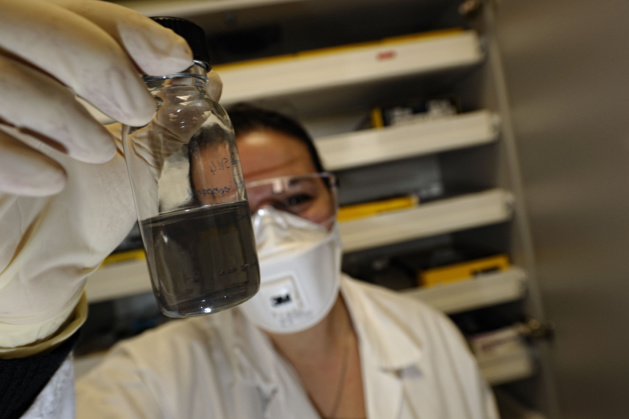
Credits DR
The last European legislation concerning new food dates back to 1997. Yet, technologies have evolved ever since and opened the gates to new markets and new proposals to solve certain issues regarding diet. Thus, the text that was voted during the last plenary session in October mainly aims to remove barriers deemed to be archaic.
Supervising the new technologies in food production
In doing so, the resolution introduces “categories for foodstuff whose molecular structure is new or was deliberately modified, as well as for foodstuff derived from cell or tissue cultures obtained from animals, vegetables, microorganisms, mushrooms or seaweed, and for foodstuff derived from materials from minerals. One category should also include foodstuff derived from vegetables obtained from non-traditional multiplication techniques, when these techniques involve significant modifications of the composition or the structure of the foodstuff, affecting their nutritional value, their metabolism or their content of undesirable substances. Foodstuff composed of certain micelles or liposomes may be included in the definition of new food.”
Making culinary innovations possible
In concrete terms, it means that a freeze-dried mealworms hamburger, as the fast-food chain Speed Burger imagined for Halloween, will no longer be forbidden by the Fraud Squad as it once was. “We may have been a bit too creative for the French State,” Bruno Bourrigault, co-director of the chain said sarcastically a few days ago. To the European institution, new food is a “foodstuff whose human consumption remained negligible in the European Union before the date of May 15th 1997.” Still, consumption of insects is tolerated, even legalized in some countries like Belgium or the Netherlands. Moreover, the U.N. supports the development of entomophagy to counter hunger in the world. We can therefore imagine that beetle-stuffed sandwiches will no longer be forbidden on the continent in the near future.
New food to be kept in check
Nonetheless, insects only represent one of the seven new foods validated by the European Parliament. The authorization of food consisting of “manufactured nanomaterials” was therefore debated. Along with food derived from animal cloning, it is one of the points of contention. In order to allow the resolution to pass, the authorized limit went from 500 nanometres of nanomaterials to 100 nanometres. As for the cloning part, it had to undergo specific measures. But, just like insects, nanomaterials did not wait for any legislation before entering the European territory. José Bové (Europe Écologie Les Verts, ecologist party) reminded us that alarmingly, “more than 80 products already on sale on the European market contain nanoparticles, without the consumer even knowing.”
Yet, the European Union wants to be reassuring and specifies that the products from the initial list only concern “new foods that have already been evaluated regarding security, that have been legally produced and put on the market in the Union and that have presented no health risk in the past.” The emphasis is on the fact that, in other cases, “it is possible to appeal to the examination procedure for the adoption of implementing acts.”

The procedure consists for example in letting every new food be examined by the European Food Safety Authority (EFSA) before its commercialisation. The organism evaluates the potential toxicity of the product and the possible nutritional imbalances induced by its introduction in the global diet.
Healthy products
Actually, the file mostly emphasises the positive aspects of the newly authorized foods: “New technologies and innovation in the production of foodstuff should be encouraged, because they could reduce the effects of the production of foodstuff on the environment, improve food safety and bring advantages to consumers as long as a high level of consumer protection is ensured.” During the debate in the European Parliament, the Dutch MP Anja Hazekamp (United European left-wing, Nordic green left-wing) nonetheless stresses the pre-eminence of the economic interests of “these new rules [which] are mostly created to allow the food-processing industry to develop new activities and to improve their profits.”
Still, if this text passes the Council of Ministers, which is very likely, we should be able to get hold of exotic fruits that are still unknown in Europe, phytosterol-enriched dairy products to lower cholesterol, preparations made of insects, microalgae, or fruit juice produced with all new techniques. As of nanomaterials, they prove to be useful to lower fat, salt, calories or emulsifier content in food and to make the assimilation of nutrients or dietary supplements easier for the organism.
Controversy concerning the authorization of nanomaterials in food
At least these are the arguments that are put forward in the file. As a matter of fact, it is indeed the question of nanomaterials that raised the most intense debate, despite the revision of the text. Among the 202 European MP’s who voted against the reform project, Marie-Christine Boutonnet (Front National, French far-right party) condemns “the absence of a true study on the health impacts, with the specific risks to which pregnant women and babies are exposed, [and] the absence of legislation on the subject regarding animal feeding.”
José Bové (EELV) already voted against it and explains his position by referring to the American donuts firm, Dunkin’ Donuts, which “just removed the nanoparticles from its products because there is a health risk.” The green European MP reminds us that “we already know that [nanoparticles] go through cell walls and create a number of problems, especially among the youth.”
This is to be taken seriously, says the Nanotechnology Industries Association (NIA). According to this independent organism, the text is “vague, unclear, and strongly contradicts the established regulations on nanomaterials, which were indeed used for years by the European institutions.” Thus, the part authorizing materials “composed of distinct functional parts” represents a problem, says the organisation, because the term “distinct functional parts” is confusing and “adds a supplementary complexity since it relies on very little scientific proof and enables a wide range of interpretations during the enforcement.”

Warnings about other new food products
In addition to manufactured nanomaterials, the 6 other food products authorized by Parliament are also at the centre of certain warnings. Concerning new foods that contain or are produced from plants, the European Consumer Organisation has warned that “the fact that a tropical plant has been consumed for decades in a third country with no reported side effects does not mean that the product isn’t without danger. We are counting on the European Food Safety Authority (EFSA) to collect the type of proof necessary to show the non-danger of consuming exotic products.”
The EFSA has recently evaluated the risks of consuming insects. The institution’s official site reports that “according to the qualified scientists of the EFSA, the eventual presence of biological and chemical risks in food derived from insects would depend on the production methods used, the substrate on which insects are fed, the life-cycle stage in which the insects are in when they are ‘collected’, their species, as well as the methods used for their future treatment.” In other words, if there are risks, they are not independently related to the product itself.
Consumers as guinea pigs
The EFSA is consequently the last hurdle when it comes to authorising a new food product to circulate the European market. But is this really reliable? Parliament has raised an issue in its report stating that “new foods must be safe, and if their safety cannot be evaluated and that a scientific incertitude remains, the precautionary principle can be applied”. The use of the verb “can” explicitly implies that it is only a possibility and is in no case a requirement. The precautionary principle should however be imperative. Does this make us guinea pigs to the foods of our future?
And the Parliament’s report to add “the requirements in terms of consecutive surveillance of putting new foods on the market could therefore be justified by the need to collect information on the real commercialisation of food products.” A food is authorised if it “presents no risk in terms of safety for human health, taking into account scientific data made available.” In other words, the idea that available scientific data could be insufficient to make a link between a pathology and a food product wouldn’t hinder the sale offering of said food.
The French Agency for Food, Environmental and Occupational Health & Safety (ANSES) supplies this kind of information. Through its nutrivigilance report form aimed to “better the consumer’s security by quickly identifying eventual unwanted side effects linked to consumption”, they collect data from people having consumed new products. Downside being that it’s an after-the-fact verification basing itself on citizens who have been practically forced to participate. Not to forget that the ANSES works in close collaboration with European organisations such as the EFSA. It’s therefore this kind of information that allow us to find out more about the effects of products such as guar gum or noni juice.
To be even more precise, the European Parliament recognises even the lack of scientific knowledge on nanomaterial: “to better evaluate the safety of nanomaterial in diets and in the aim to resolve the current deficiency of facts (…), of testing methods (…) could be necessary.”
Without bringing up the use of the verb “can” yet again, it seems that the report half-heartedly admits the potential dangers of nanomaterial and the status of guinea pig taken on whether we like it or not by consumers. All this information has been released by the European deputies not in favour of this part of the text, such as Joëlle Mélin (Front National) who assure that “with nanomaterial we are putting ourselves at considerable risk of sanitary scandals”.
In a nutshell, while the fact that the European Union revised the current legislation concerning food, which had become somewhat ancient since 1997, can be appreciated, ,it is regrettable that the matter of manufactured nanomaterial hasn’t been faced by a separate vote on the same basis as food derived from cloned animals. Respecting the precautionary principle seems to have been overridden and until the Council of the European Union refuses the file, the measures will be ratified as they are.






























